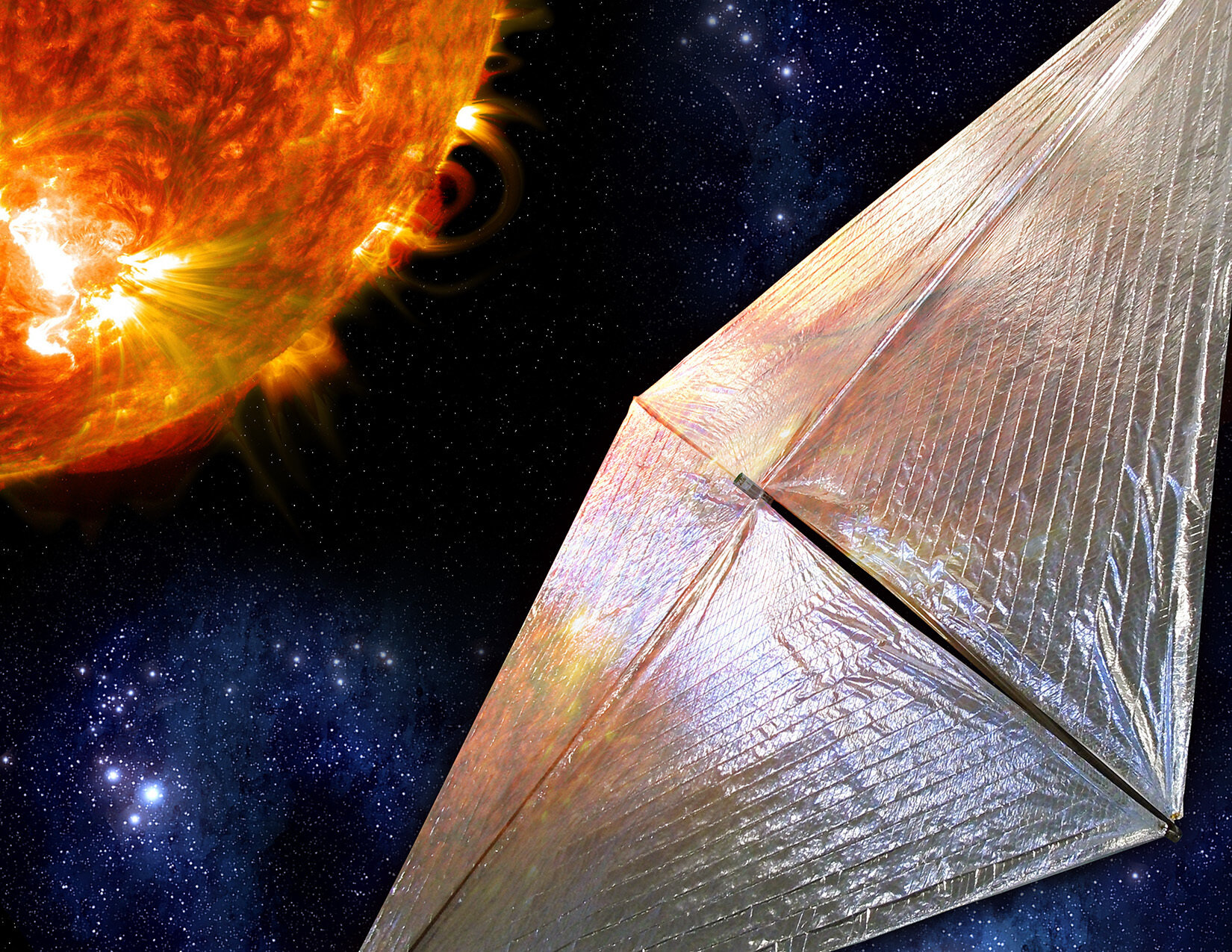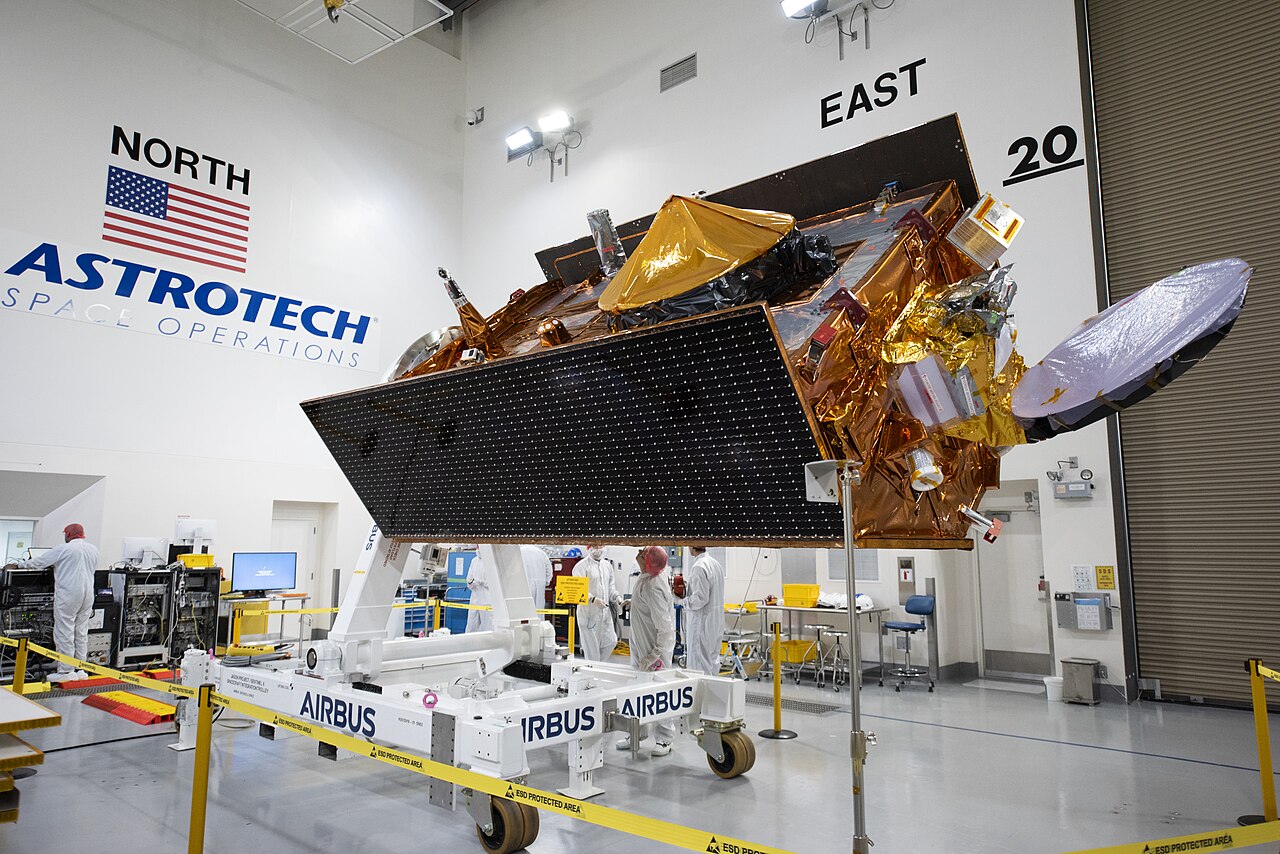PICTURED: Solar Cruiser approaches the Sun in a concept illustration from NASA. Photo credit: NASA.
As part of a growing consensus that solar sailing can dramatically reduce the cost of space exploration, NASA announced that a new solar sailing vessel would join a new mission to study relations between the Earth and the Sun while simultaneously expanding the limits of solar sailing technology.
Solar Cruiser sports a nearly 1,700 square meter (18,000 square foot) sail, nearly a half-acre, built to channel the energy of the light from the sun to produce propulsion in the same way a sail catches wind to propel craft along water.
For comparison, the size of an average boxing ring, dimensions currently used in the sail of the world’s most successful solar sailing spacecraft, are around 60 square meters, (658 square feet), about 2600% smaller.
This suggests the scope of Solar Cruiser will be as near to groundbreaking as makes no difference, and would if successful, allow it to achieve speeds never seen in space fairing craft before.
The concept of solar sailing isn’t new, but it hasn’t always been NASA pioneering the rather straightforward technology. Instead it was largely down to the work of the non-profit Planetary Society co-founders Louis Friedman and Carl Sagan, who In 1976 demonstrated the idea live on the Johnny Carson Show.
However even back in Galileo’s time, the famous scientists hypothesized that there would be “heavenly winds” that could propel craft through space just as on Earth.
On winds of sun
Solar sailing, as Solar Cruiser plans to do, is probably less-complicated than rocket launching.
Photons given off by the sun may carry no actual mass, but they do carry energy that can be manipulated. When these solar photons collide with the sail material, known as Mylar, they are forcibly repelled in the opposite direction, generating thrust.
Solar Cruiser’s principal investigator and expert in solar sailing tech, Les Johnson at NASA’s Marshall’s Space Flight Center in Huntsville, Alabama, details in an interview with Bloomberg the method behind solar sailing.
“It’s [light] a very, very small push, it’s on the order of a few ounces per football field,” said Johnson, noting contrarily though that depending on the size of the sail, you could shorten the trip to Pluto from 11 years, to just two, since a big enough sail would create thrust faster than any rocket ever made.
While freely exploring space would be difficult with solar sailing, the technology allows a freer relationship between a craft and the orbit it’s set in.
PICTURED: Another concept drawing, this one of solar wind, a force which pervades every square inch of our solar system, and one which Solar Cruiser hopes to study in several dimensions. Photo credit: NASA.
Solar Cruiser’s mission, designated by NASA as the Interstellar Mapping and Acceleration Probe, will be to fly to an important place in the solar system known as the Lagrangian equilibrium, or “L1” point, sitting about 1 million miles towards the Sun.
“The study of the solar influence on interplanetary space and the area around our Earth has made great advances just in the past decade,” said Thomas Zurbuchen, associate administrator for science at NASA Headquarters. “I’m confident the next decade promises even more new discoveries and historic technology innovations”.
At the L1 point, Solar Cruiser’s small satellite, sometimes called a “CubeSat,” will garner both uninterrupted observations both of the Sun, as well as the Earth’s exosphere, the outermost part of Earth’s system, one which nearly reaches the Moon and which is the first to interact with solar wind.
One of the most critical observations will be the continual monitoring of near-Sun weather systems, allowing the research satellites to double as early warning sentries, while the unique propulsion system will allow them to maintain unusual orbits while facilitating access to rarely-seen regions of the Sun such as the poles.
PICTURED: Images from a real solar sailing craft as the Nile and the Red Sea can be seen from the Planetary Society’s LightSail 2. Photo credit: Planetary Society. CC 3.0.
LightSail 2
In 2019 the Planetary Society enjoyed the culmination of its co-founders’ dreams. LightSail 2, the most successful solar sailing mission to date, and one that was crowdfunded by Society members, launched into space on June 25th.
500 Planetary Society members were present at the launch when it roared out of the atmosphere inside a Falcon Heavy Rocket. After a month it deployed its aluminized Mylar sail and began its mission.
They demonstrated once and for all time that solar sailing was totally functional, and that space exploration, which was considered an endeavor too great for private industry 20 years ago, can even be done with crowdfunding.
“We’ve learned a lot about solar sailing over the past year, and LightSail 2 still has a lot to teach us. During our extended mission we’ll continue making changes to our sail control software, which will help future solar sail missions optimize their performance. We also plan to test using the sail to intentionally generate additional atmospheric drag, which is a way in which future spacecraft could deorbit themselves, cutting down on the ever-growing amount of space debris.”
Now the craft, which orbits at 707 kilometers (439 miles) above the earth, officially entered extended-mission phase in mid-July 2020, where its only remaining purpose is to provide data to scientists.
One such useful discovery is that while atmospheric drag causes a decay in the orbiting of objects around the Earth, making them destined to fall down eventually, certain periods and positioning of the solar sail has allowed the craft to actually overcome the force of drag and raise its orbit, suggesting like Les Johnson that with a big enough sail, a permanent orbit is a possibility.





